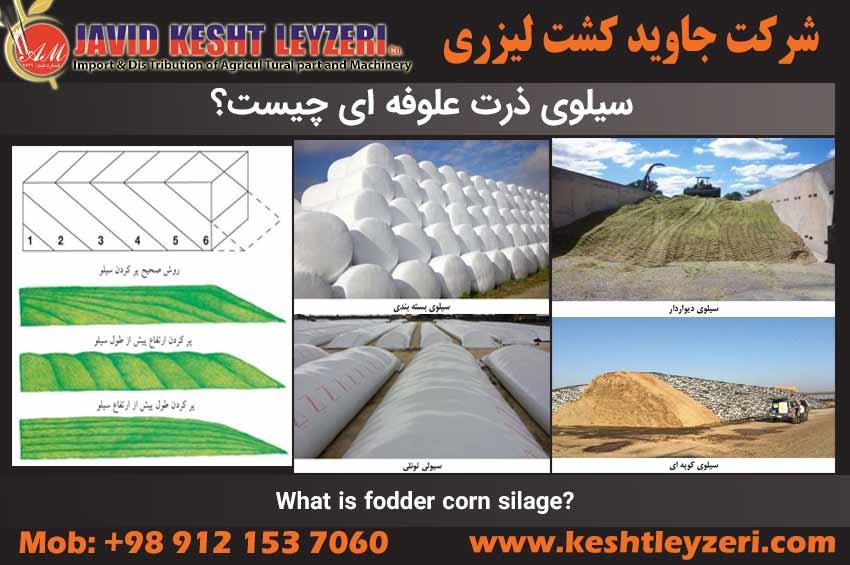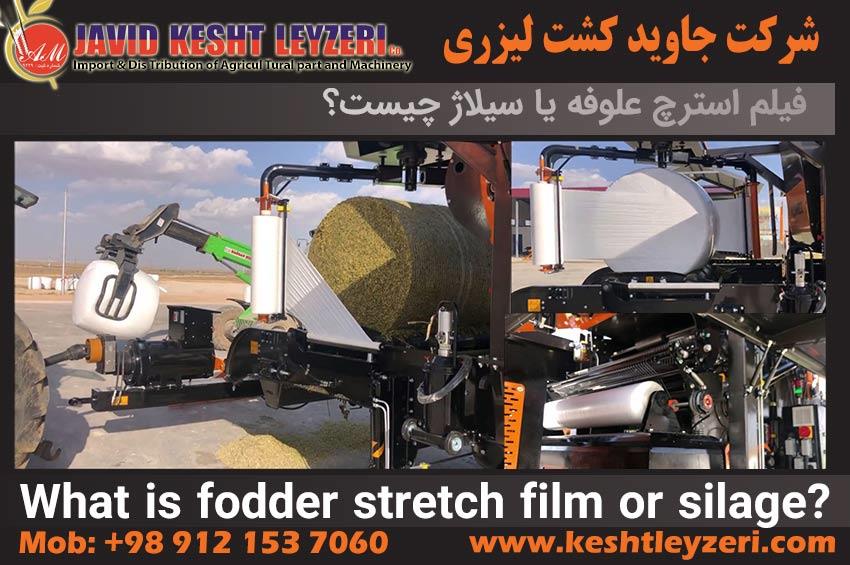- 05 Nov 2023
- 1131
What is the application of fodder corn silage packaging?
Silo packing fodder corn is one of the best ways to store corn for animal feed. This method makes corn not only available at any time and place, but also of higher quality. Packed silos are very uniform and uniform and prevent contamination and damage that may occur in traditional silos. Also, in terms of economy, the use of packed silos leads to a reduction in costs and an increase in livestock productivity. In short, silage packaging is an efficient solution with wide applications for the storage and use of fodder corn as animal feed.
- 05 Nov 2023
- 1033
How is silage production and consumption managed?
Animal feed and silage production have always been very important for humanity. Many of the foods we consume are produced directly or indirectly from livestock, and if the supply of these foods is not done well, we may face serious problems. Especially in cold and snowy seasons, providing fresh food for livestock faces many challenges. Therefore, various methods have been used to store animal feed since a long time ago. One of the most important methods is storing this food in the form of silage, which allows farmers to store and use a large amount of plants for livestock feed.
- 28 Oct 2023
- 1173
What is fodder corn silage?
Corn silage is used as a high quality fodder in many dairy farms and in some fattening farms. This product is very popular due to its high performance, good digestibility, high energy and ease of adaptation to mechanized harvesting and feeding. Fodder corn can be cultivated ideally in many regions of the country as a second crop after the fall crop. Ensiling is necessary to preserve harvested forage corn. The purpose of making silos is to preserve the harvested product by anaerobic (oxygen-free) fermentation. This process uses bacteria to convert soluble carbohydrates into acetic acid and lactic acid, or "souring" the product. In a completely sealed silo, the product can be preserved for a long time without losing quality. To produce a high quality silage, it is necessary to carefully plant, store and harvest silage corn.
- 18 Oct 2023
- 1410
sunflower silage
Although sunflowers are commonly grown for seed production, they can also be used as a forage source for livestock. About one-third is the dry matter of the sunflower plant, so large amounts of potential forage are not used when grown for seed only. Stressed or low-yielding sunflowers can be profitable if used as a forage source for livestock. As a suitable alternative in drought conditions, sunflower forage is usually fed as silage and can be a valuable option.
- 14 Sep 2023
- 1134
Development of Khasil silage fodder, a step towards reducing water consumption
Iran is located in the arid and ultra-arid region of the world, and with climate changes, the temperature increases in the summer season. This increase in temperature increases evaporation and transpiration in the summer season. Therefore, a large part of the water used in the fields is spent for evaporation and transpiration. One solution to reduce water consumption in fodder production is to use fall grain silage forage.
- 11 Sep 2023
- 1065
What are the types of stretch film or nylon fodder packaging?
The use of stretch film is very common in the packaging and transportation industry. There are different types of stretch film, each of which has its own characteristics and uses.
- 10 Sep 2023
- 1080
What is fodder stretch film or silage?
Plastic silage vacuum roll film, commonly known as silage film, is used in the forage silage process. This type of plastic is used to protect the fodder from air and moisture, so that the black pattern creates a vacuum and reduces the contact between the outside air and the fodder.
- 09 Sep 2023
- 1147
Fodder silage and suitable plants for fodder silage production
The occurrence of the effects of climate change at the level of the country has caused farmers a serious crisis related to the lack of fodder. Therefore, planting fodder crops (winter grains mixed with nekum during the seasons of abundant water and rainfall in autumn and winter) can be effective and useful in providing fodder and reducing the problems of farmers and increasing their per capita income by reducing the cost of animal feed. it is on attention.
- 08 Sep 2023
- 1322
Parts and features of KOMEL fodder packing machine
The fodder silage packaging machine produced by KOMEL operates using a tractor shaft system (PTO) and an electric motor. This machine is able to pack prepared fodder, beet pomace, fruit pomace, corn fodder and other products.
- 08 Sep 2023
- 1261
What is the fodder silage packing machine?
The fodder packing silage machine is an agricultural machine that is used to pack fodder in the form of silage. Silage is a fodder storage method that converts fodder into a high-protein product by biological analysis and air control instead of classic storage in a silo.










